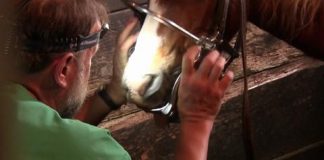
One of the most devastating equine diseases is laminitis. With myriad causes, no fully reliable treatment and often a dismal prognosis in severe cases, laminitis is a dreaded diagnosis. A new collection of research published by the Equine Veterinary Journal aims to update equine veterinarians and interested members of the public on the latest knowledge in laminitis treatment and prevention.
Causes of laminitis include overindulgence on fresh grass or rich feeds, concussion from working on hard surfaces and retained placenta in broodmares. Exposure to the wood of black walnut trees can lead to laminitis. Obesity is considered a risk factor for the condition. While management practices can reduce a horse’s risk of founder, with so many potential causes, the risk is always present.
The laminitis publication from the Equine Veterinary Journal offers free resources covering some of the latest research into the condition. The published research includes topics ranging from evidence to support the use of cryotherapy (ice) in early stages to slow the progression of the inflammation to the role of insulin in laminitis in ponies.
“Increasingly, horse owners will research ailments suffered by their animals with [the Internet] and laminitis is often targeted in this respect by horse owners desperate to find solutions for their afflicted animals,” writes Equine Veterinary Journal Editor-in-Chief Celia M. Marr. “There is a problem, however, that much of the freely available material lacks rigour and quality. Many scientific journals, including EVJ, are generally not available to nonsubscribers… EVJ is keen to provide free access to information of particular welfare importance and interest to the equine community and to this end, this month, a virtual issue will be launched drawing together 15 original research articles with the Editorials and Review Article in this issue.”
The online publication is sponsored by the British Equine Veterinary Association Trust and is available at www.wileyonlinelibrary.com/journal/evj.
Further Reading
First-Aid for Laminitis
Guide to Horse Hoof Problems
Laminitis Recovery Time






Everyone, who has horses, should know about laminitis, and mostly how to prevent it. worth reading and learning more about.
good info it is crazy to have to subscribe to get information from certain sites especially when you may just need a specific article
Great to know.
Good articles on the “further reading” link.
I had to reread this to tell a friend about it.